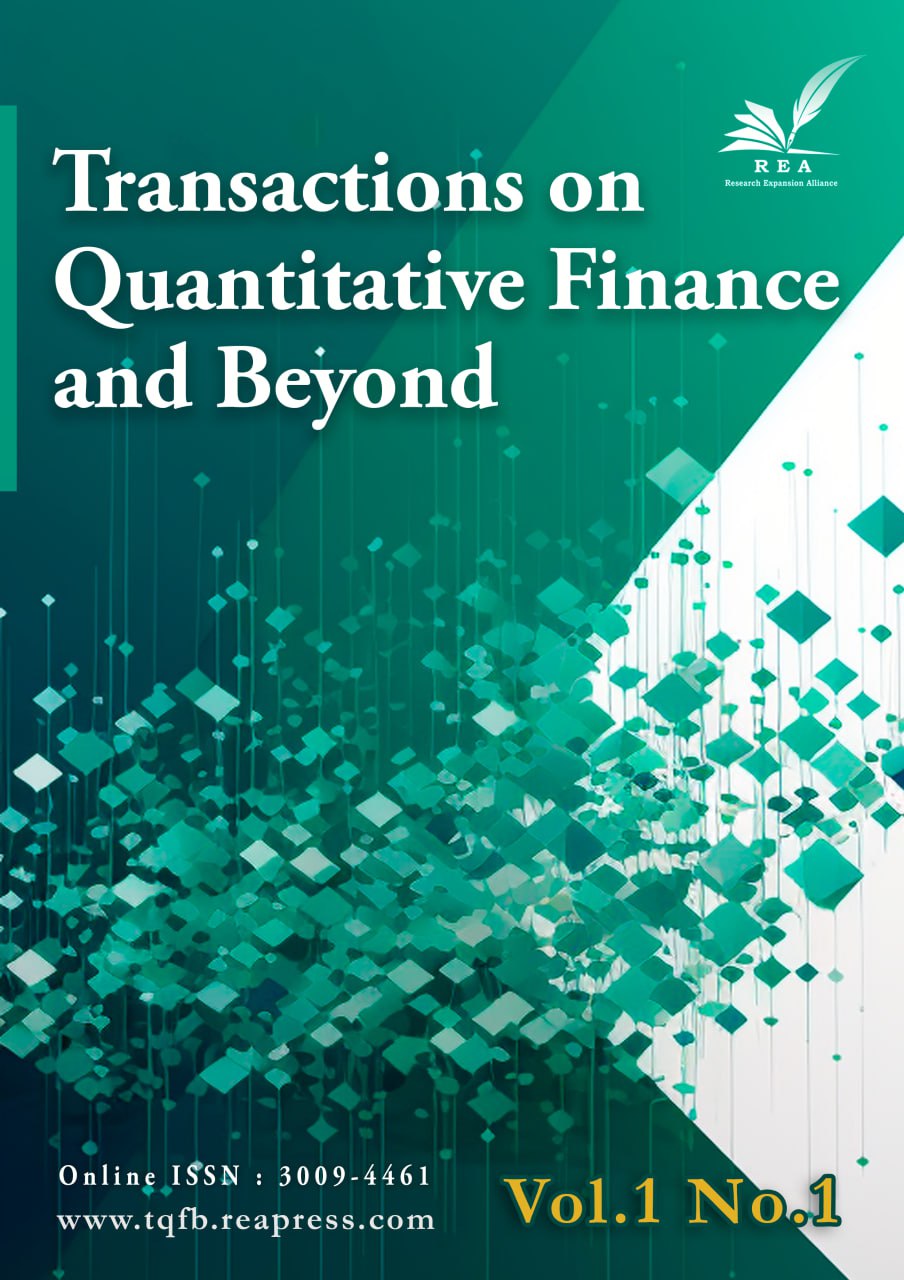Evaluation Hybrid model of Neural Networks and Genetic Algorithms in the Forecast Energy Consumption the Transportation Sector
Abstract
Energy besides Other factors production is considered the main factor in the growth and economic development and in the performance of different sectors economic can play beneficial roles. Hence, the country authorities should try to predict anything more precise energy consumption in the proper planning and guidance consumption, to control the way they desired energy demand and supply parameters. The purpose of this paper is Evaluation Hybrid model of artificial neural networks and genetic algorithms in the forecast demand energy. for Prediction energy consumption in the country. Case study is energy consumption in transportation sector of Iran. So for this review, were used the annual data energy consumption of transport as a variable output of forecast models and data from the entire country's annual population, GDP and the number of vehicle as the input variables. Evaluation results showed that the hybrid model of neural networks and genetic algorithm (ANN-GA), compared to other models with the highest accuracy in predicting energy demand in the transportation sector.
Keywords:
Energy consumption, Multivariate regression, Artificial neural networks, Genetic algorithmReferences
- [1] [1] Mazraati, M. (1999). Comparing the forecast performance models var, bvar, (energy carrier demand in iran) (PhD Thesis, Tehran University). (In Persian). https://elmnet.ir
- [2] [2] Mobtani Dehkordi, A., Hamidi nezhad, A., & Hori Gafari, H. (2009). Investigate the situation of energy management. Journal of strategy, 18(51), 271–291. (In Persian). https://www.sid.ir/paper/89171/fa.
- [3] [3] Amade, H., Gjazi, M., & Aabbasifar, Z. (2009). Relationship between use of energy, Growth of economic and employment in various sectors of the economy. Journal of economic research, 44(86), 1–38. (In Persian). https://www.sid.ir/paper/11933/fa
- [4] [4] Ahmadi Gharache, E. (2006). Presentation of a neural network model for forecasting oil prices by taking the oil shocks (Master Thesis, Tarbiat Modares University). (In Persian). https://elmnet.ir/doc/10828183-54272
- [5] [5] Azari, A., Shariati Niaser, M., Barzi, M. A., & Bakhtiari, A. (2008). Estimating the amount of gas consumed in Tehran on using neural network technology. College of engineering, 42(8), 961–968. (In Persian). https://journals.ut.ac.ir/article_27820.html
- [6] [6] Poorkazemi, M. H., & Asadi, M. B. (2009). Forecasting of crude oil prices using neural networks and OECD inventories, 44(3). (In Persian). https://jte.ut.ac.ir/article_20037.html
- [7] [7] Abrishami, H., Ghanimi Fard, H., Ehrari, M., & Rezaei, M. (2019). The forecast of oil price of Persian Gulf, Based on technical analysis and neural networks. Seasonal journal energy economics studies, 21(2), 23–42. (In Persian). https://www.sid.ir/paper/473655/fa
- [8] [8] Menhaj, M. B., Kazemi, A., Shakoori Gangavi, H., Mehregan, M., & Taghizadeh, M. (2019). Transport sector energy demand forecasts by using neural networks, A case study in Iran. Management research in iran, 14(2), 203–220. (In Persian). https://www.sid.ir/paper/356545/fa
- [9] [9] Sadeghi, H., Zolfaghari, M., & Elhami Nezhad, M. (2011). Comparing the performance of neural networks and model ARIMA in modeling and forecasting of short-term for price of OPEC basket of crude oil (With an emphasis on adaptive expectations). Seasonal journal energy economics studies, 8(28), 25–47. (In Persian). https://www.sid.ir/paper/99461/fa
- [10] [10] Zarezadeh Mehrizi, M., & Bozorg Hadad, O. (2010). Irrigation forecast simulations using a hybrid algorithm ANN-GA. Journal of soil and water, 24(5), 942–954. (In Persian). https://www.sid.ir/paper/141365/fa
- [11] [11] Pao, H. T. (2006). Comparing linear and nonlinear forecasts for taiwan's electricity consumption. Energy, 31(12), 2129-2141. https://doi.org/10.1016/j.energy.2005.08.010
- [12] [12] Murat, Y. S., & Ceylan, H. (2006). Use of artificial neural networks for transport energy demand modeling. Energy policy, 34(17), 3165-3172. https://doi.org/10.1016/j.enpol.2005.02.010
- [13] [13] Ediger, V. Ş., & Akar, S. (2007). ARIMA forecasting of primary energy demand by fuel in Turkey. Energy policy, 35(3), 1701-1708. https://doi.org/10.1016/j.enpol.2006.05.009
- [14] [14] Yu, L., Zhou, L., Tan, L., Jiang, H., Wang, Y., Wei, S., & Nie, S. (2014). Application of a new hybrid model with seasonal auto-regressive integrated moving average (ARIMA) and nonlinear auto-regressive neural network (NARNN) in forecasting incidence cases of HFMD in shenzhen, china. PloS one, 9(6), e98241. https://doi.org/10.1371/journal.pone.0098241
- [15] [15] Bianco, V., Manca, O., & Nardini, S. (2009). Electricity consumption forecasting in Italy using linear regression models. Energy, 34(9), 1413-1421. https://doi.org/10.1016/j.energy.2009.06.034
- [16] [16] Pan, H., Haidar, I., & Kulkarni, S. (2009). Daily prediction of short-term trends of crude oil prices using neural networks exploiting multimarket dynamics. Frontiers of Computer Science in China, 3, 177-191. https://doi.org/10.1007/s11704-009-0025-3
- [17] [17] Geem, Z. W., & Roper, W. E. (2009). Energy demand estimation of South Korea using artificial neural network. Energy policy, 37(10), 4049-4054. https://doi.org/10.1016/j.enpol.2009.04.049
- [18] [18] Menhaj, M. B. (2005). Basics of Neural Networks. Issues of Amir Kabir University. (In Persian). http://publication.aut.ac.ir/fa/book/show/711
- [19] [19] Malik, F., & Nasereddin, M. (2006). Forecasting output using oil prices: a cascaded artificial neural network approach. Journal of economics and business, 58(2), 168-180. https://doi.org/10.1016/j.jeconbus.2005.09.004
- [20] [20] Ghanbari, A., Kheari, M., & Azami A. (2008). Simulation demand for gasoline and oil and gas of ground transportation in Iran by using Genetic Algorithms. Season a value economics, 4, 157–177. (In Persian). https://ensani.ir/fa
Downloads
Published
Issue
Section
Categories
License
Copyright (c) 2024 Transactions on Quantitative Finance and Beyond

This work is licensed under a Creative Commons Attribution 4.0 International License.







